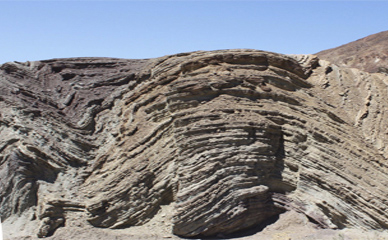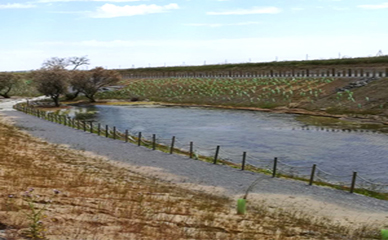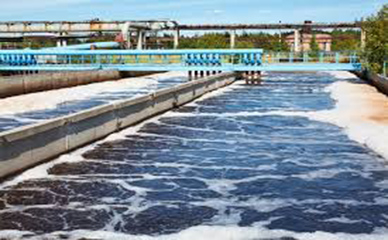
The research activity carried out within this line of investigation covers the optimisation and design of all types of coastal protection structures. These studies are carried out through physical model tests in the Ports and Coasts dock of the Centre for Technological Innovation in Building and Civil Engineering (CITEEC) of the University of A Coruña (UDC).
Through these studies, the following key parameters for the design of this type of structure can be analyzed:
1- Stability of the protection mantles and the influence of different protection pieces
2- Agitation inside the port docks
3- Phenomena of wave-structure interaction such as overtopping, pressures on vertical shoulders or dikes and wave transmission and reflection
4- Optimization of the design of floating structures. Stress measurement in the joints and in the mooring system, as well as the measurement of movements
5- Analysis of ship operations inside ports
6- Analysis of wave dissipation structures such as anti-reflective springs and screens
7- Erosion studies on Jetties
Below are a number of relevant projects carried out by GEAMA that show the existing capabilities for the design and optimization of coastal protection structures.
Physical model study of the new configuration of Port D’Aro (Girona, Spain). Port agitation and stability analysis with different protection pieces
The Port D’Aro marina has required the design of a new dock configuration to reduce the stability and agitation problems that existed. The work carried out by GEAMA has served to optimize the design made by the company Enginyería Reventos through physical model tests.
The first of the objectives is to optimize the global stability of the dock. To do so, three protection mantles were analyzed (breakwaters, monolayer cubes and Xbloc), in addition to measuring the overflow, the pressures on the shoulder and the stability of the esplanade. On the other hand, agitation inside the marina was studied, for which it was necessary to reproduce the surrounding conditions: cliffs, mooring lines, types of docks, etc.

New concepts and methodologies in the design and construction of concrete breakwaters and floating pontoons as maritime works of shelter and mooring (FLOMAR)
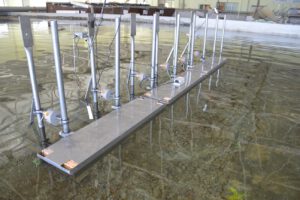
Floating docks are coastal defense structures that are located in areas sheltered from bottom waves and serve to reduce agitation conditions in marinas. These
structures are usually fixed to the seabed with chains or elastomers. However, the option of piloting them has become a current alternative to reduce the space occupied by these structures and also to serve as a mooring area.
The aim of this project was to find out the behaviour of different models of piloted floating dock designed by the company Aquática Ingeniería Civil. The work carried out by GEAMA consisted of carrying out physical model tests to determine wave transmission and measure the forces on the piles. The tests reproduced 2 wave directions, two ground stiffnesses and 2 systems for anchoring the dam to the pile.
System for the optimization of port operations through dynamic analysis of moored ships and maritime climate, with field work and physical model tests
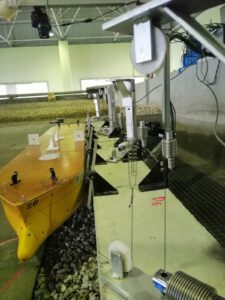
The port operation of a port terminal is a phenomenon that is closely related to the movements of the ship at berth and its mooring system. There are currently three methodologies for this type of study: physical model tests, numerical modelling and field campaigns. All three methodologies have their advantages and disadvantages. The objective of the present project developed by GEAMA has been to study the behaviour of ships moored in the outer harbour of Punta Langosteira, A Coruña, through physical model tests and field campaigns.


